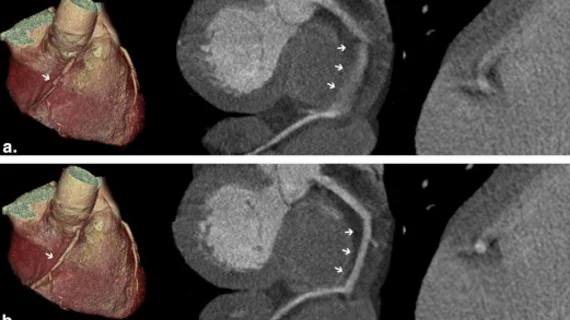Even in the absence of symptoms, CT angiography-detected coronary artery disease puts patients at a significantly increased risk of experiencing a heart attack during their lifetime [1].
These individuals face more than an eightfold risk for myocardial infarction, according to new findings published in the Annals of Internal Medicine,
“Coronary atherosclerosis may develop at an early age and remain latent for many years,” Klaus Fuglsang Kofoed, MD, PhD, with the Departments of Cardiology and Radiology at Copenhagen University Hospital, and co-authors explained.
Experts with the University of Copenhagen in Denmark included 9,533 individuals age 40 years or older in their analysis; each was asymptomatic and had no known history of ischemic heart disease. The team used participants’ coronary computed tomography angiography (CCTA) exams to assess for the presence of subclinical coronary atherosclerosis. The primary outcome was myocardial infarction (MI) and the secondary was a composite of death or MI.
Of the nearly 10,000 people included in the study, just under half (46%) displayed signs of subclinical coronary atherosclerosis. Nonobstructive disease was detected in 36%, and obstructive disease was identified in 10%. Subclinical coronary atherosclerosis was more common in men (64%) than women (36%).
At follow-up (median 3.5 years), 193 patients had died and 71 had suffered MI. Individuals with the highest risk for MI were those with obstructive-extensive or obstructive-nonextensive subclinical coronary atherosclerosis, experts noted.
The authors suggested that these findings could offer clinically relevant insight into onset of CAD, in addition to providing a potential framework for risk assessments in asymptomatic patients with no known history of ischemic heart disease.
The study abstract is available here, and an accompanying editorial can be found here.

